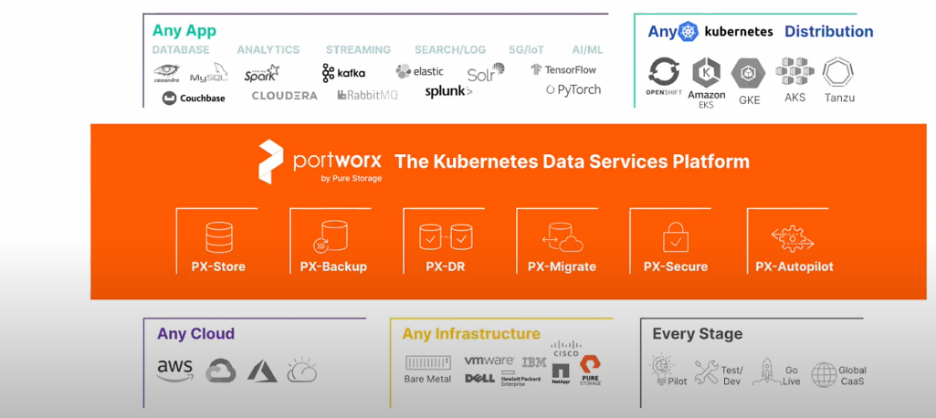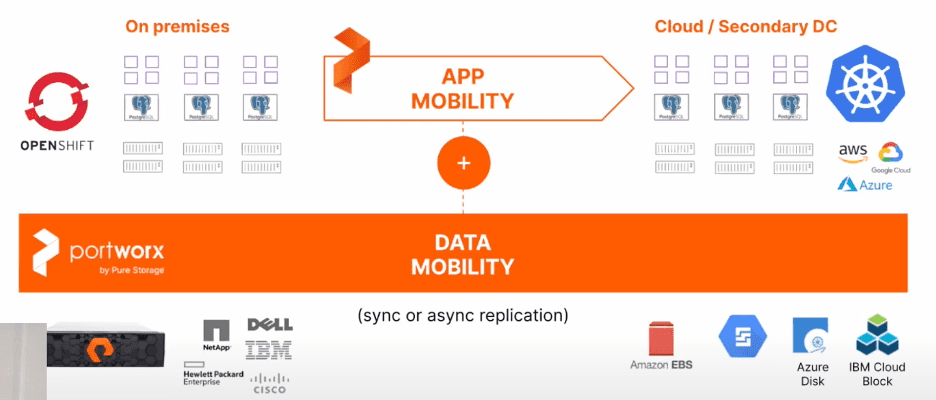
Portworx Provides Software-Defined Storage for Kubernetes
Remember when storage was simple? It was in a single location, and was physical, either inside a server or as a separate device like a SAN or NAS. Map the device to the storage and off you went.
And that location didn’t vary: the same storage was in the same place. It had its challenges, of course—storage admins were a real thing—but those challenges weren’t of the kind where the admin would ask, “Just where the heck is my storage, anyway?”
Those days are gone. And as the IT industry has evolved, storage has, too. Virtualization changed everything, but even then, storage was kept on-premises. When the storage was virtualized, it was suddenly more flexible, but you still knew basically where it was.
Now we live in the cloud era, and any bit of infrastructure can be pretty much anywhere. Storage is still often on-premises, of course, but it can also be in AWS, or Microsoft Azure, or Google Cloud, or some other vendor like an MSP. This can be especially difficult for developing modern applications that use containers and Kubernetes.
As Joe Gardiner, manager, Cloud Architecture EMEA at Pure Storage, said at his company’s Tech Field Day presentation, “machine-centric, traditional storage acts like an anchor for container-based apps.”
Gardiner first laid out the problem. For running Kubernetes in an environment with multiple clusters, for example, “maintaining the mapping between application configurations and volumes is incredibly important to be able to fail over, and that’s a massive limitation” with traditional storage.
He also mentioned the difficulties in supporting multi-tenant settings and their stricter security controls, especially in heterogeneous environments. Encryption, for example, is hard to control across multiple storage back-ends and infrastructures.
What’s needed is a way to cut that anchor loose and provide the kind of storage solution that isn’t bound to traditional methods. Pure Storage believes that Portworx provides that solution.
Portworx is a Kubernetes data services platform. It acts as a software-defined storage overlay designed for Kubernetes and cloud-native use cases. See Figure 1.

Gardiner said to think of Portworx like any other infrastructure component: it’s deployed into any Kubernetes cluster, no matter the flavor, like any other Kubernetes component. It’s Kubernetes- and platform-agnostic, so you can use it in pretty much any scenario. It provisions storage primitives within Kubernetes.
It works with any underlying block storage sub-system, Gardiner said in answer to an attendee’s question. “You can run us [Portworx] on top of anything, including our competitors’ block storage.”
Pure Storage positions Portworx as “storage that understands applications” (Figure 2). That means it understands things like topology—so, for example, it can adapt its data path to suit a stateful application using Portworx storage. Portworx also maintains consistency across clouds and regions, and can interact with an application when taking a snapshot, Gardiner explained.
“These capabilities are focused on data protection,” Gardiner said. “Not just volumes, but objects in Kubernetes.”

It all adds up to better disaster recovery (DR), too. Portworx maintains the mapping between the container volume and the resources consuming it. This brings with it the potential for automated DR.
Gardiner said that Portworx syncs the deployment configuration used to get a workload running. If a site goes down, because of Portworx’s integration with Kubernetes, it can call out to the scheduler, bring the pods back online and mount the correct volumes, very quickly.
The question asked by admins at this point would be: “Just how quick is ‘very quickly?’” Pure Storage makes some bold claims on this front, including a Recovery Point Objective, or RPO, of zero. Gardiner said that for some customers, the Recovery Time Objective, or RTO, is as little as 2 minutes, depending on the containerized app and how long it takes to come online.
That’s huge. In this day of ubiquitous ransomware attacks, being able to recover that fast would provide enormous peace of mind.
Pure Storage also provided a demo of Portworx in action. You can find it here.